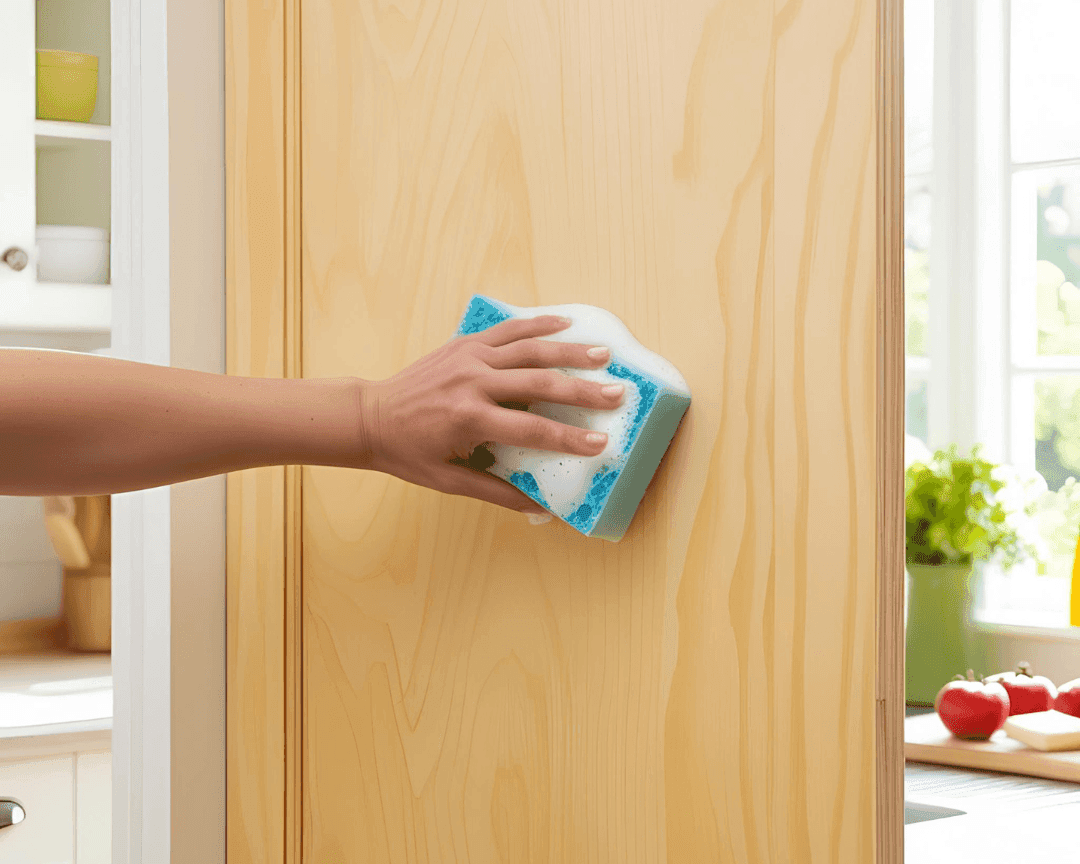
Tips on How to Protect Plywood Doors from Moisture and Termites: Longevity Made Simple

May 9, 2025
When constructing or renovating a home, something to consider to make your materials last longer and stronger is maintaining your plywood doors. Plywood doors are great because they are aesthetically pleasing and functional. However, like everything else, plywood doors have two major issues: termites and water. If not sealed off, these two issues may lead to destruction, rotting, or the door becoming unusable.
It's a good idea to know how to guard your plywood doors against these problems. In this guide, we're going to show you some easy tips to prevent your plywood doors from termites and moisture, so they remain strong and attractive for years.
Why plywood door protection is a good idea
Plywood doors are strong and durable, but plywood is typically only a thin coating of wood, which makes it particularly susceptible to termites. Termites can weaken and damage wood by eating it, weakening the door and rendering it unsightly. Plywood also readily swells, curves, or weakens in wet conditions, and this causes the door to be less robust and functional as time goes by. By securing your plywood doors against these, you can keep them in decent condition and fully functioning.
How to Protect Plywood Doors from Termites
Termites are among the worst insects that can infest wood doors. These small insects feed on the cellulose in wood, which soon causes damage. Fortunately, there are numerous methods to safeguard your plywood doors against termites:
-
Use Termite-Proof Plywood
One of the most effective methods to prevent termites is to use termite-proof plywood. Companies like Royale Touche provide termite-resistant plywood that is chemically treated to repel pests.
-
Use Anti-Termite Treatment
If you are making use of regular plywood, you might apply anti-termite treatment on the door surface. Such treatments are either in spray or liquid form that you can spray or drizzle on the edges and surface. Don't forget to regularly reapply the treatment for continued protection.
-
Install Physical Barriers
For outside doors, installing a physical barrier such as a metal mesh at the bottom of the door can prevent termites from reaching the wood.
Preventing Moisture Damage to Plywood Doors
Moisture can also damage plywood doors. Plywood swells, bends, or even rots when it comes into contact with water. Here are a few methods to prevent moisture from destroying your plywood doors:
-
Apply a Water-Resistant Finish
The best method to prevent moisture damage is to use a water-resistant finish. This provides a protective layer that prevents water from penetrating the wood. Select a high-quality sealer for wooden doors, and reseal the door from time to time.
-
Install BWP Plywood
BWP plywood is used to withstand water damage and thus is a suitable option for regions with heavy rain or high humidity.
-
Correct Installation
Ensure your plywood door is correctly installed with no gaps left in the frame. Sealing the door edges correctly will prevent moisture from entering. Also, make sure the door is hung in a manner that ensures air circulation to minimize the buildup of moisture.
-
Ventilation
Good airflow around your plywood doors will prevent moisture accumulation. In the case of exterior doors, ensure that the door area is well-ventilated so that moisture escapes.
Additional Tips for Making Plywood Doors Last
-
Select High-Quality Plywood
When buying plywood for doors, ensure you purchase high-quality, durable plywood. Brands such as Royale Touche provide plywood products that are termite and moisture-resistant, ensuring your doors will last longer.
-
Periodic Inspection and Maintenance
Inspect your plywood doors regularly to detect any issues early. In case you detect any termite or moisture damage, repair it immediately to prevent further damage.
-
Select the Right Finish
Select a finish that not only seals the door but also suits your taste. You can use the natural wood look or paint it to your liking while still sealing the door from moisture and termites.
Taking care of your plywood doors mainly means keeping moisture and termites away. With the right materials, treatments, and regular care, your plywood doors can stay strong, beautiful, and functional for years. By using termite-proof plywood, applying a good finish, and doing annual maintenance, you’ll ensure that your doors continue to perform well and look great. Royale Touche is a reliable choice for high-quality plywood that will keep your doors protected and durable.
Frequently Asked Questions
How do I know if my plywood door is damaged?
Search for holes, soft spots, or visible tunnels, which are likely to indicate termite infestation. There might also be dust on the doorframe, and you will hear a hollow sound when knocking on the door.
How frequently do I need to treat my plywood door with anti-termite treatments?
It's advisable to treat your plywood door every 1 to 2 years. You may need to treat it more frequently if you reside in an area with a high termite population.
Can I use any plywood for doors?
It's advisable to use high-quality plywood that has been specifically treated to withstand termites and moisture.
What is the finish to use on plywood doors to help shield them against moisture?
Use a water-resistant finish such as varnish or polyurethane that can shield your plywood doors against moisture.
Best plywood brand to use in doors in India?
Royale Touche is a well-known brand that produces plywood resistant to both termites and moisture, and thus ideal for doors.
Related Blogs
Benefits of Using Plywood for Flush Doors
Which Plywood is Best for Doors?
